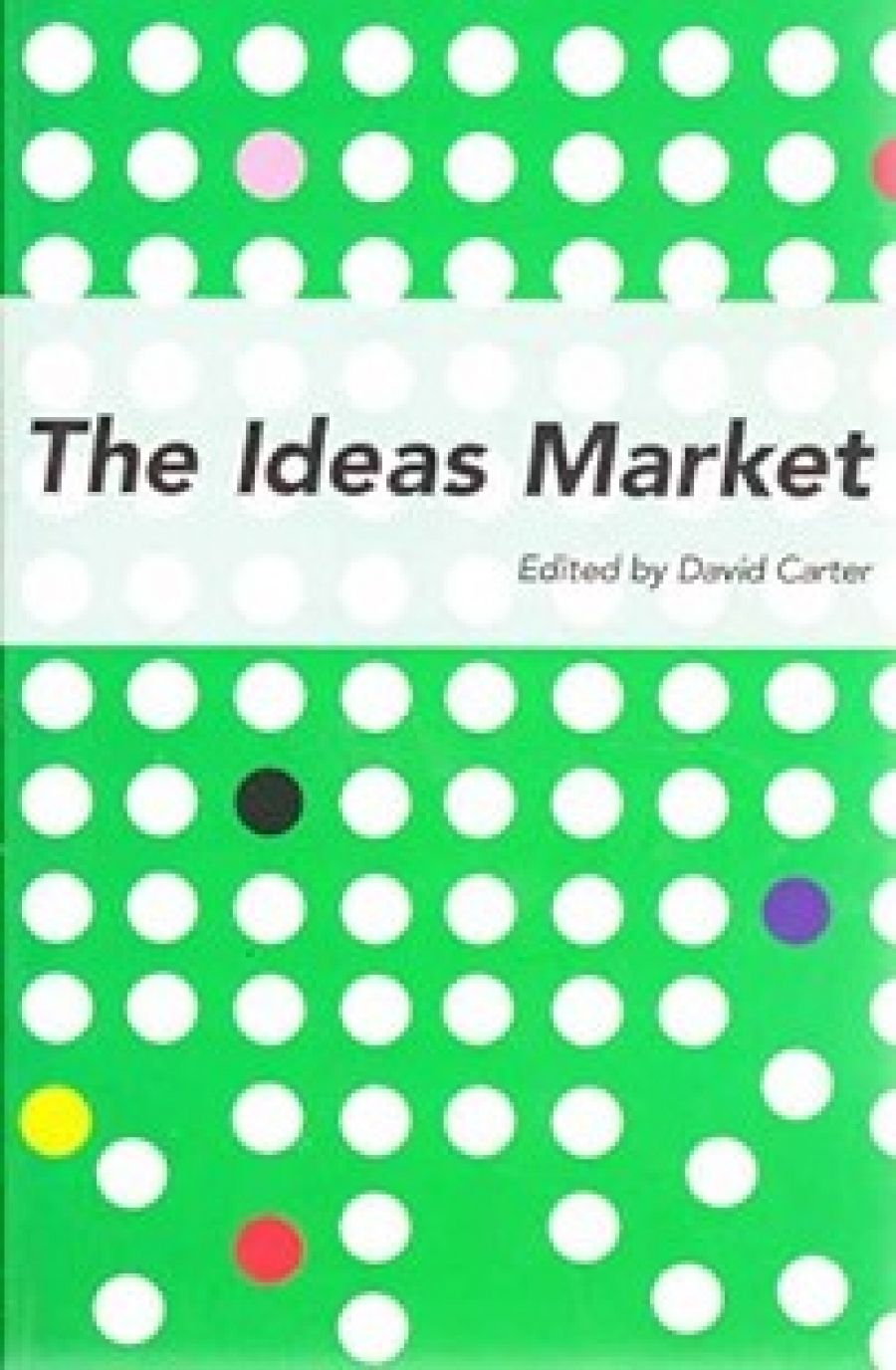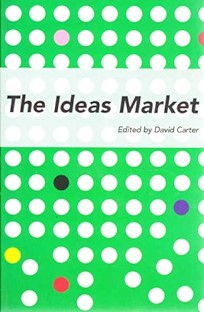
- Free Article: No
- Contents Category: Politics
- Review Article: Yes
- Article Title: A Practical Void
- Online Only: No
- Custom Highlight Text:
‘Some of the ideas for this book were first tried out,’ writes its editor, David Carter, during the 2001 conference of the European Association for Studies of Australia at Lecce, in southern Italy. Displaying interest in Australia as a way to get one’s fare paid to leave the country is not the only reason why this bain-marie of a book has not found a reason to exist.
- Book 1 Title: The Ideas Market
- Book 1 Subtitle: An alternate take on Australia's intellectual life
- Book 1 Biblio: MUP, $32.95pb, 208pp
- Book 1 Cover Small (400 x 600):

- Book 1 Cover (800 x 1200):

Although this collection totters towards cultural relativism, several authors don the fig leaf of Edward Said’s line about ‘speaking the truth to power’. None confronts its assumption that there is ‘the truth’. Instead, Catharine Lumby manages both to back Said and to dispute the ‘legislative relationship’.
Apart from moral ambivalence, what hallmarks of the public intellectual as viewed from the university are exposed in The Ideas Market? Public intellectual apparently means publicly funded. All but two of the fourteen contributors are dependent on the taxpayer. Both exceptions, the spirited Guy Rundle and Marcus Westbury, make their livings from their own creativity, which is perhaps why their pieces are among the least self-referential. Another branch of public intellectuals outside universities are the self-identifying clergy, notably George Pell, the brothers Jensen, Tim Costello and Peter Carnley.
Indeed, another entry qualification for academics as public intellectuals seems to be this skimpy knowledge about Australia. Paul Gillen, for instance, discerns a shift in the tone of public debate from the declamatory style of ‘Inky’ Stephensen and Brian Penton to a conversational manner. This generalisation is supportable the less you know about Elkin’s opposition to the police massacres of Aborigines, Walter Murdoch’s essays, J.D. Medley’s columns, K.S. Inglis on the Stuart Case, the Immigration Reform Association in breaking down White Australia, the Aboriginal Advancement League in preparing for the 1967 referenda and Jim Cairns’s droning on about the 1954 Geneva Accords for Indo-China. The difference has not been so much in tone but rather that the debate has been taken over by lawyers and away from activists.
Lyn McCredden also takes up the issue of tone in taking on Robert Manne. She is ill at ease with his blending the injustices towards Aborigines into the misdemeanours of the crew who snatched Quadrant away from him. Again, the culture of forgetting is in play, because she has swallowed Manne’s forgetting about how he had got Quadrant’s editorship after Roger Sandall had failed to deliver the antiblack propaganda that Hugh Morgan and Western Mining wanted during the Bicentennial. McCredden then does what she accuses Manne of doing, by making herself out as more sensitive. The contradiction between her complaints and her expression appears again when she uses ‘powerfully’ in praise of a critique of ‘phallic plentitude’. The rush to establish tonal correctness echoes the 1950s, falling somewhere between an elocution lesson from June Dally-Watkins and the contests inside English departments over who could display the finest Leavisite sensibility at morning tea.
Ignorance about the past also punctures Lumby’s defence of her kind of media studies. She claims that ‘journalism was once regarded as a trade unworthy of scholarly attention’. That ‘once’ was longer ago than she knows: her own university offered diplomas in journalism during the 1920s, requiring English, a foreign language, history, philosophy, economics, law and the sciences, followed by two units on the practice and history of journalism. Who’s to say that such a curriculum would not serve today’s students, their employers and even social justice better than her version of theory? If the training she offers is to be preferred, why do so many journalists reproduce PR handouts while so few can read a balance sheet, let alone between its lines? Like courses in business ethics, the media theory units are there to say that you have ticked the box, not to put into practice.
After reflecting on why students in Sydney’s western suburbs resist ‘doing theory’, McKenzie Wark breaks ranks by calling attention to the politically incorrect concept of ‘class’. But is theory what those educational conscripts are being told to do under the threat of being failed? Or are they being let through so long as they serve up clichés decorated with jargon? No disciple of Foucault should find it difficult to challenge the assessment practices imposed in the name of ‘doing theory’. The subversion of this fading brand of institutionalised truth will involve carrying ‘theory’ beyond generalisation and abstraction to integrate it with ‘doing’. The Ideas Market alludes to theory in this sense, but none of the contributors is ‘doing’ it.


Comments powered by CComment